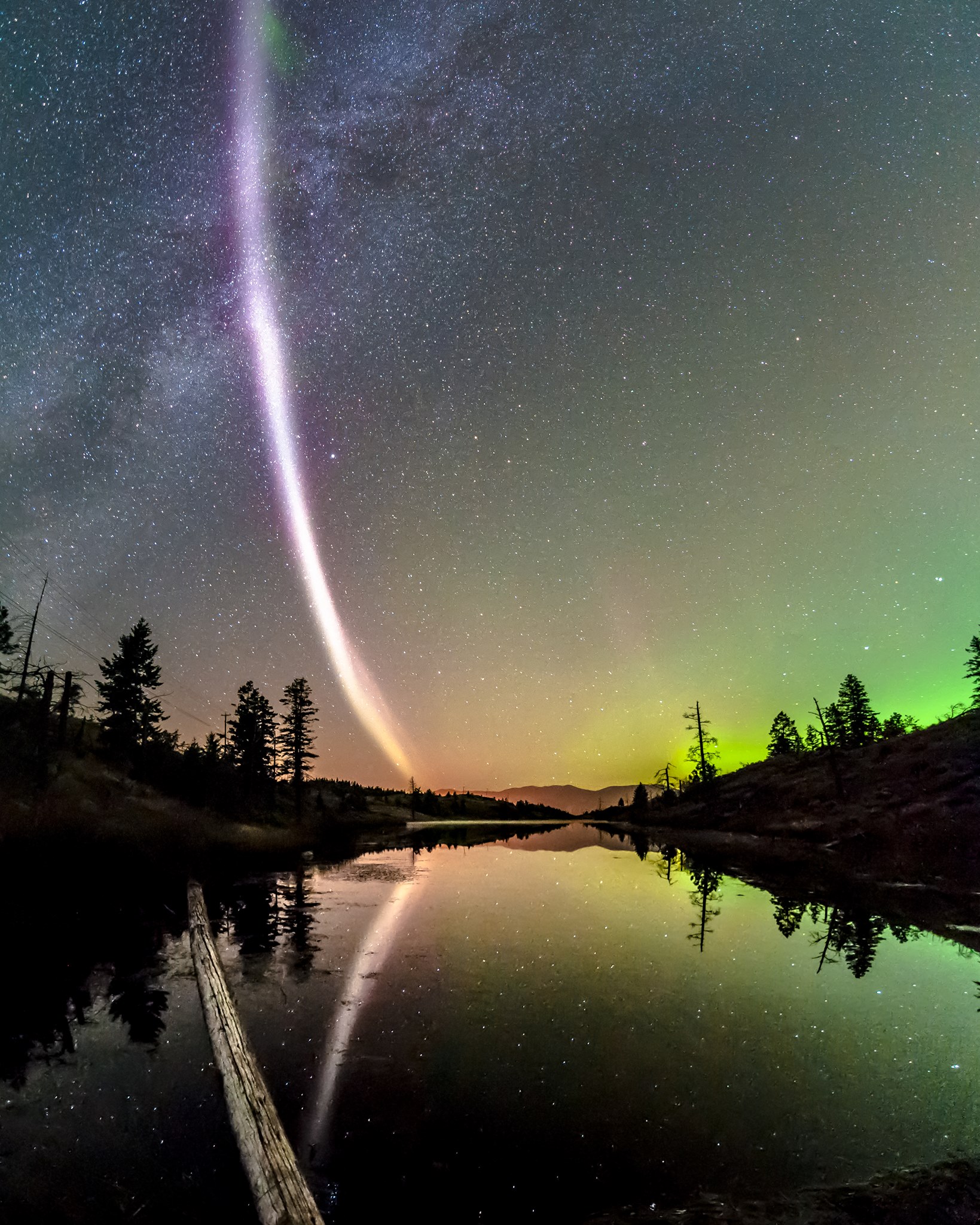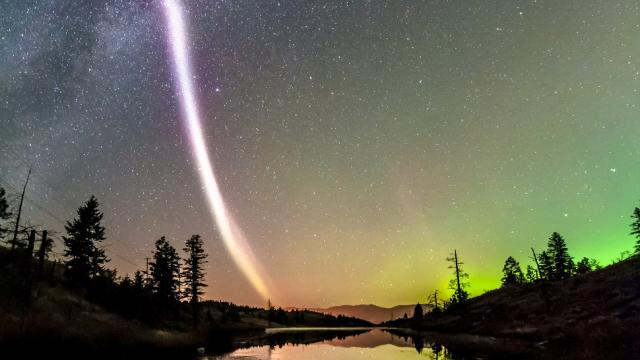Meet Steve, a newly discovered atmospheric phenomenon that’s so strange it still doesn’t have a formal scientific description, hence the placeholder name. Thanks to the work of aurora enthusiasts and atmospheric scientists, we’re now learning more about Steve, but many questions remain.
Image: Dave Markel Photography
This stunning feature was first documented by the Facebook group Alberta Aurora Chasers last year. Awareness of the object, in conjunction with the powers of social media, have now resulted in more than 50 observer reports. This ribbon of purple and green light is unlike any other known auroral feature and we’re still not sure what causes it.
The Alberta Aurora Chasers decided to call it Steve in honour of the children’s movie Over the Hedge, in which a character arbitrarily conjures up the name Steve to describe an object he’s not sure about.

Image: Dave Markel Photography
The work of these citizen scientists has attracted the attention of space scientists from NASA, the ESA, and University of Calgary, who are now actively trying to figure out what this transient object really is. There’s even been a push to turn Steve into an acronym meaning “Strong Thermal Emission Velocity Enhancement” — a description based on preliminary satellite observations.
As noted at the Aurorasaurus blog, a picture of this feature is starting to emerge. We know that Steve is a 25 to 30 kilometer (15 to 18 miles) wide arc that aligns east-west, and extends for hundreds, possibly thousands, of miles. It can last for as long as an hour or more, and it appears to be seasonal, disappearing from October to February.
It emits light in mostly purple-ish colours, and is often accompanied by green and short-lived “picket fence” structures. It appears in the northern hemisphere along latitudes similar to Calgary, Alberta. At first, the citizen scientists figured it was some kind of proton arc, but proton aurorae aren’t visible to the naked eye, so it has to be something else.
Eric Donovan, an associate professor in the Department of Physics and Astronomy at the University of Calgary, has taken an interest in the feature, and is using data collected by the ESA’s Swarm magnetic field mission to learn more about it.
Swarm uses a trio of satellites to take high-precision and high-resolution measurements of the strength, direction and changes in the Earth’s magnetic field, which are responsible for triggering auroras. These spectacular features are caused by collisions between electrically-charged particles from the Sun that enter the Earth’s atmosphere and collide with gases like oxygen and nitrogen.
Recently, one of Swarm’s satellites flew straight through Steve, and data collected by its electric field instrument showed very clear changes. As Donovan noted in an ESA press release, “The temperature 300km above Earth’s surface jumped by 3000°C and the data revealed a 25km-wide ribbon of gas flowing westwards at about 6km/s compared to a speed of about 10m/s either side of the ribbon.”
Wait, full stop. A temperature spike of 3000 degrees?! That didn’t seem right, so we contacted Donovan directly for confirmation.
“The temperature spike number is correct,” he told Gizmodo.
Whoa. OK, then. We also asked Donovan if he knows what causes the feature.
“With my colleague Bea Gallardo-Lacourt, we are working on the conditions under which it occurs, and we have an idea, but are not sharing that right now,” he said. “We plan on publishing the idea shortly.”
Donovan said that a surprising aspect of Steve is how frequently it appears. It’s been under our noses for quite some time, but we’re only now recognising it as a distinct atmospheric phenomenon. It has an unusual spectral mix, so the colour looks “off” compared to normal aurora.
“I saw it a few months ago in Calgary, so it’s quite bright,” he said. “A colleague of mine suggested it might be the most seen type of aurora — because it is equator-ward — and also the least studied, because we didn’t know it existed, really.”
Exciting! We asked Donovan to give us the head’s up when his new paper is ready for prime time.
[ESA, Aurorasaurus]
